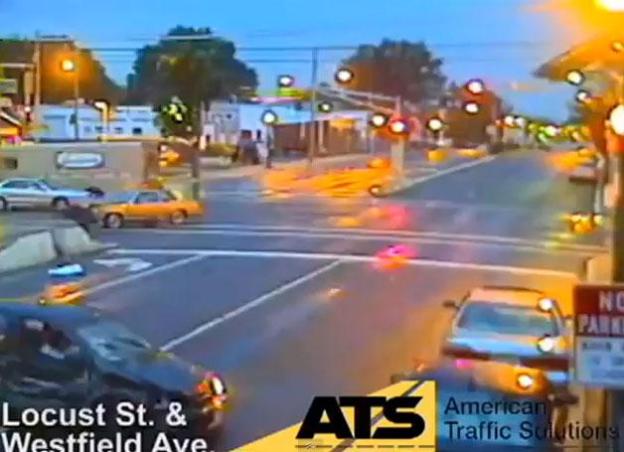
After arriving at the intersection late, a driver in Roselle Park, New Jersey decided to run a red light — and unfortunately like many others — probably thought he could disregard the law and eek through without a fuss. Not this time. Instead, the car approaches the intersection at what appears to be faster than designated speeds, barrels through, slams into a car crossing the intersection, smashes into a concrete divider, and launches into an awesomely dangerous 360 degree spin before eventually hitting a light pole and coming to a complete stop.
But other than it being an extremely boneheaded maneuver on the part of the driver, what’s the controversy? Well, according to ABC news, American Traffic Solutions (ATS), the company contracted to manage the red light cameras for the city, posted the video on its website. In doing so the company says it wanted to demonstrate to the public the very apparent dangers running yellow and red lights yield, but has sparked the wrath of local motorists instead.
“There are a lot a people who don’t think that running a red light is a problem,” spokesman Charles Territo of American Traffic Solutions told ABC News. “Rarely do people see the actual crash occurring, and the violence and the drama that accompanies it is something that everyone should see.”
But residents in Roselle Park see it a differently and are none too pleased with the city’s traffic lights. They claim that the timing of yellow lights are intentionally short and are not given enough time to make it through intersections. And with the cameras eagerly snapping away, the installed cameras are nothing more than a money trap in order to generate revenue at the expense of local residents. According to ABC news, one New Jersey woman was issued a $140 ticket for driving through an intersection 1/5 of a second too late.
Of course city officials disagree. They credit the use of traffic cameras as an effective use of modern technology in order to deter drivers from running lights and ultimately saving lives. In fact, statistics from ATS show that since the town implemented its red light camera program in 2011, the number of people running red lights has decreased 47 percent. Adding to their argument, 94 percent of those that are issued a violation do not receive another one.
What do you think? Are traffic cameras an effective use of modern technology or are the citizens of Roselle Park correct in their assertion that the cameras are nothing more than revenue instrument? Sound off in the comments below.


